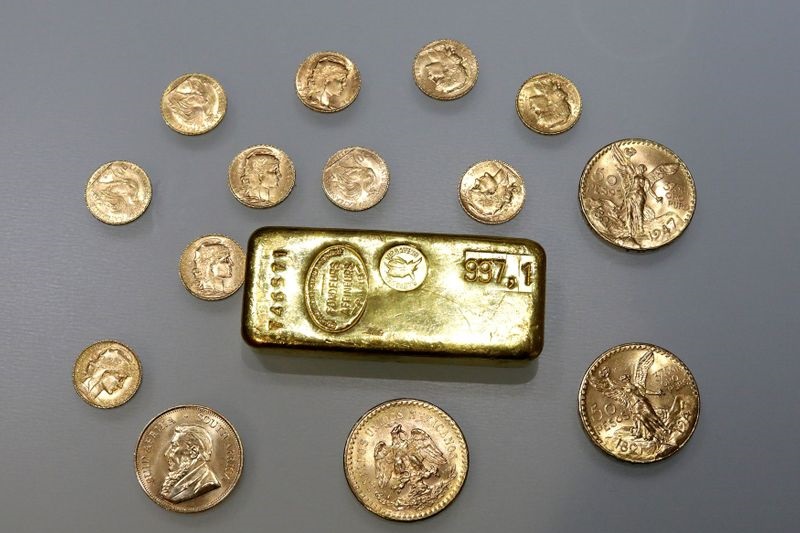Tesla shares drop after third-quarter profit falls short of estimates
Investing.com -- Gold has surged to around 50 all-time highs this year, becoming the standout performer in global markets.
Strategists at RBC Capital Markets say gold’s rally is not just a result of favorable macro conditions, but is being fueled primarily by a “compounding uncertainty” that continues to build. They argue this persistent unease has strengthened gold’s appeal as a hedge, safe haven, and portfolio diversifier.
Political tension over a potential U.S. government shutdown, renewed U.S.-China trade friction, concerns about Federal Reserve independence, fiscal strain, inflation anxiety and fears around debasement have all “together contributed to an otherwise consistent sense of uncertainty” that investors are responding to by increasing allocations to gold," RBC strategists led by Christopher Louney said in a note.
The team notes even small rotation flows from bonds and equities, can have an outsized effect, given how modest shifts in global portfolios translate into meaningful tonnage for the gold market.
They also flag that while gold’s performance is being compared to past major rallies, this run – at roughly 700 days – is still shorter than previous cycles that stretched beyond 1,000 days, suggesting a further rally is not without precedent.
RBC has now lifted its price scenarios again, placing its middle case at $4,227 per ounce in Q4 and $4,427 in 2026, while the high case ranges from $4,963 in Q4 to $5,108 next year.
The broker no longer sees a move beyond $5,000 as unlikely, and believes the most plausible trading range now lies between its revised middle and high scenarios.
Despite the sharp run, investor positioning does not look extreme. Gold-backed exchange-traded product (ETP) holdings have not yet reached record highs in tonnage terms and managed money positioning still has “room to run,” while interest in upside options remains elevated.
RBC said its conversations with asset managers suggest that gold’s share in portfolios, traditionally capped at around 5%, is now being openly discussed in the 5-10% range, with few signs of profit-taking.
Central banks remain another key pillar of support, with official sector buying forecast at more than 850 tons this year.
These purchases are strategic rather than tactical and add to gold’s broader “permission structure” as a reserve asset, ranking higher on central bank balance sheets relative to euros or Treasuries in some cases, strategists said.
While high prices are expected to curb consumer demand in India and China in tonnage terms, RBC believes cultural affinity and expectations of further gains will keep buyers engaged. Scrap supply, meanwhile, is likely to undershoot as holders delay selling.
The broker does not rule out a temporary consolidation resembling the mid-April to mid-August pause but says a deeper correction would require a sharp turn in macro conditions and a collapse in uncertainty, neither of which it sees on the horizon.
In its strategists’ words, “bubbles do tend to pop, they also manage to float,” and for now, gold still appears buoyant.
